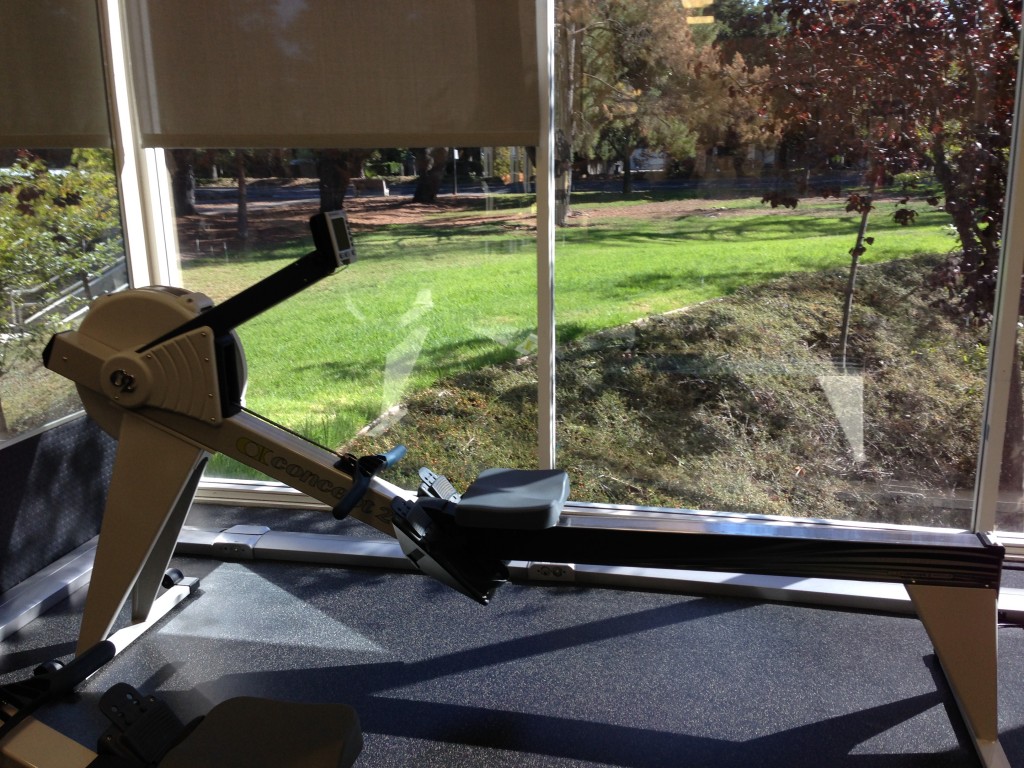
One of my favorite writing productivity tools: the rowing machine.
Writing Productivity Tip: Write When You’re Not Writing
When people speak about writing productivity, they usually talk about the drafting phase of writing. How many words can you write in an hour? How many pages per day?
More relevant, of course, is the question of how quickly you can turn around a project.
Optimizing writing productivity isn’t simply about managing the time you spend with pen to paper, or fingers on keyboard. It’s about managing the sum total of time you have for the project, and setting your brain to work using different kinds of focus and attention. Use your non-writing time well, and the drafting phase becomes more efficient and fun.
Two Types of Attention
In the book Focus, Daniel Goleman writes about multiple kinds of attention, including goal-oriented, top-down attention, and open, bottom-up attention.
Clearly, writing requires top-down focus. But you’ll write with more fluidity and creativity if you set aside time for the creative, wandering thoughts. Says Goleman, “Open awareness creates a mental platform for creative breakthroughs and unexpected insights.”
When working on a writing project, I intentionally schedule time with bursts of focused attention (researching, outlining, drafting), and breaks. In those breaks, I let my brain work on the writing in different ways.
The fastest path to inspiration is to remove yourself from the writing environment and go someplace where your mind can wander.
- Take a walk outdoors.
- Go to the gym – I find that the rowing machine is a terrific writing/thinking environment.
- Take a shower. (The drought in California has put a damper on long showers, alas.)
While you’re walking or wandering, invite yourself to think about the topic you’re working on. Instead of trying to focus, let your mind wander and return to the subject. During open attention, new insights and connections often appear.
If that happens, write them down as soon as practically possible. The awkward truth is that the best insights arrive when it’s least convenient to write them down. Keep a pen and paper handy, record a voice note in your phone, or create a mnemonic so you can remember the idea.
When you next sit down with focused attention to write, you’ll be starting from a different place, and the process should be smoother and faster.